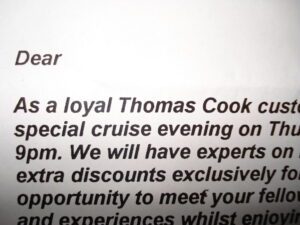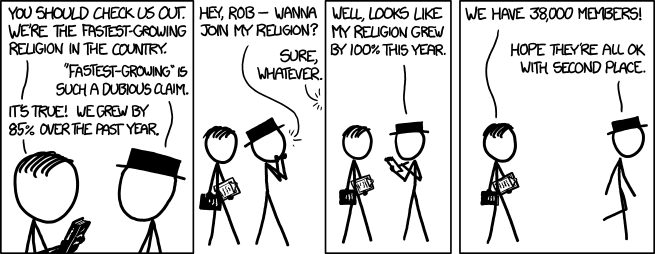Chapter Five: Communication
 Change can be tricky in an organization. “Messaging” is critical both for both internal and external communications, be it a Fortune 500 company or small 501c3. It impacts everything from employee buy in and retention to fund development and outreach. Getting ahead of potential misunderstandings is a useful way to save time, money, and aggravation.
Change can be tricky in an organization. “Messaging” is critical both for both internal and external communications, be it a Fortune 500 company or small 501c3. It impacts everything from employee buy in and retention to fund development and outreach. Getting ahead of potential misunderstandings is a useful way to save time, money, and aggravation.
Consider the following:
- Snarky comments:
- You look good for someone your age.
- You would have made more sales if you sounded like you knew what you were talking about.
- Positive comments:
- I love your unique outfits!
- Let’s practice some techniques for increasing sales this quarter.
Which example is more motivating and creates a better sense of belonging?
When leaders implement change it impacts the whole staff. Messaging is important. Having staff on board and informed of what changes are coming improves efficiency.
Positive Messages

Business related messages are sent everyday, sharing information, requesting information or actions, expressing gratitude and so on. Most of the time these are positive or neutral messages even when they involve small complaints or claims where you request that an error be corrected. These are all direct approach messages, in which the main idea comes right upfront and details follow. Occasionally, you must communicate bad news in writing, which requires a more careful, indirect approach. All of these situations involve conventions that business professionals follow to minimize miscommunication and its fallout, and thus keep their operation running smoothly.
Please note when action is expected to come of a request, the opening question may not require a question mark. Never forget, however, the importance of saying “please” when asking someone to do something. Notice also that the list in the message body helps break up dense detail, so the request message is more reader friendly. All of the effort that the writer of the above message made to deliver a reader-centered message will pay off when the recipient performs the requested procedure exactly according to these clearly worded expectations.
If you expect resistance to your request, an indirect approach is more effective. Ideally, you’ll make such persuasive pitches in person or on the phone so that you can use a full range of verbal and non-verbal cues. When it’s important to present your argument in writing, however, such requests should be clear and easy to spot but buffered by goodwill statements and reasonable justifications.
When responding to information or action requests, simply deliver the needed information or confirm that the action has been or will be completed unless you have good reasons for refusing. Ensure the accuracy of all details and utilize the “you-attitude.” Note that sometimes manager approval may be necessary before providing the information. Organizationally, a positive response to an information request delivers the main answer in the opening, proceeds to give more detail in the body if necessary, and ends politely with appreciation and goodwill statements.
Expressing gratitude

Such messages should be short and simple as well as quick and easy to write. For that reason, not sending them when someone does something nice for you appears ungrateful, rude, and inconsiderate. In fact, sending a thank-you note within 24 hours of interviewing for a job, for example, is not just extra thoughtful but close to being an expected formality. In most situations, email or text is an appropriate medium for sending thank-you messages.
Expressing congratulations
Celebrating the successes of your professional peers shows class and tact. Such messages create positive energy in the workplace and should be all about the person you are congratulating.
Expressing sympathy
Few situations require such sincerity and care with words as expressions of sympathy. Misfortune comes upon us all, and tough times are just a little more tolerable with the support of our friends, family, and community–including those we work with. When the loved-one of a close associate dies, for instance, expressing sympathy for their loss is customary, often with a card, rather than an email or text, signed by everyone in the workplace who knows the bereaved. You can’t appreciate email messages the same way you can a collection of cards from people showing they care.
Remember that these messages should be selfless. Offering your condolences in the most respectful, sensitive manner possible is the right thing to do.
Negative Messages
Business doesn’t always go smoothly and bad customer experience can have long-lasting consequences. Customers can be disappointed with a faulty product or poor service; shipments might get damaged, lost, or arrive late; or one business might infringe on the rights and freedoms of another. In all such cases, customers or clients are likely to make your company aware of what went wrong and what they want to be done about it. Indeed, it’s their consumer right to do so and the business or organization receiving such a message should take it as valuable intelligence on customer expectations that must be met for the business to be viable.
A claim explains what went wrong and demands compensation from the offending party while a complaint explains what went wrong and merely demands correction or apology. Minor complaints are best communicated in person, on the phone, or by email (if it’s important to have them in writing) so they can be dealt with quickly. More serious complaints or claims are delivered as formal letters to lay down a paper trail in case they need to be used as evidence in a lawsuit.
When customers are reasonable about communicating a problem with a situation or business transaction, the customer service representative or manager dealing with the matter is more likely to respond positively and meet the needs of the client. However, ineffective complaints or claims often merely vent frustrations, issue threats, don’ts say what they want or only vaguely imply it, or demand completely unreasonable compensation. Assume that a business will take your complaint or claim seriously if it’s done right because, no matter the industry, companies are rightfully afraid of losing business to negative online reviews. In this day of social media, good customer service is crucial to business survivability. A complaint provides a business with both valuable information about customer expectations and an opportunity to win back a customer–as well as their social network if a good endorsement comes of it from the now-satisfied customer–or else risk losing much more than just the one customer.

Effective complaints or claims are politely worded and motivated by a desire to right wrongs and save the business relationship. They are best if they remind the business that you have been a loyal customer (if that’s true) and really want to keep coming back, but you need them to prove that they value your business after whatever setback prompted the complaint. If the writer of such message strikes the right tone, they can end up getting more than they originally bargained for.
Complaints and claims take the direct approach of message organization even though they arise from dissatisfaction. They follow the usual three-part message organization.
Message delivery
Most introductory college communications courses require students to create a memo. Why is a form of communication that is so seemingly out-of-date still taught? Simply because email is essentially a memo. Understanding the purpose and procedure for a traditional business memo is an excellent way to know how to create a polished and professional email.
In fact, the main difference between emails and memos is that non-email memos exist on paper and there is one major format difference; the signature.
Paper memos never have a closing and signature. Historically, memos were typed up by stenographers and taken back to a boss for approval the writer would indicate that they really wrote the memo by initialing by his or her name in the paper heading using blue or black ink. This is where the “cc” and “bcc” line came from in an email. Those abbreviations should still be used both in memo writing and when writing business letters. It is also important to note the inclusion of any attachments at the bottom of each letter or memo.
Purdue OWL has a further explanation and sample memo here: https://owl.purdue.edu/owl/subject_specific_writing/professional_technical_writing/memos/format.html
Images and visual media such as websites
Communication is increasingly visual. Making your message easy to read and understand is almost as important as what you say. Some useful tips for communication design outside of memos and business letters:
- Never center text.
- Choose simple fonts over more complicated ones.
- Eleven and twelve point fonts are typically the easiest to read in a paragraph.
- If you are using multiple font sizes, make the difference at least two to four font sizes larger or smaller.
- Use italics for titles and foreign languages only.
- Use bold and underlining sparingly.
- Stick to two fonts on a page. If one is a “serif” type, chose a “sans serif” for your other font.
- Don’t use all caps. Screen readers can’t read it and it just looks like shouting in printed material.
Here is a short, but very useful, .pdf that showing how much impact good design has in something as mundane as a contract: http://www.flussobjekte.at/hpall/award/2630/nzknvgh8cz.pdf
Social media and blogs are as important as any formal communication. Not only to are they a way to increase your business presence, they are a great way to quickly undermine your project and lose credibility with your staff and clients. Never put anything “out there”, even privately, that you wouldn’t say in a meeting at work.
A useful resource for anyone who finds themselves needed more instruction on good design should find an inexpensive copy of Robin Williams’ The Non-designer’s Design Book. Many libraries have it available: https://www.worldcat.org/title/1036760501
Copyright awareness
Although of minimal concern when writing a memo, copyright and plagiarism can creep into day-to-day writing thanks to the increasing use of AI. AI is a useful tool to help managers organize thoughts, set up basic communications, and help with refining language. AI isn’t plagiarism, but use it carefully for material you represent as something created by you. It is also possible to repurpose training information from different sources. Below are two excellent websites that can help you to stay legal:
https://creativecommons.org/ and www.copyright.gov
Lying with Statistics
So, “lying” is probably too strong of a word choice, but both when creating your communication and when reading information created by others, watch carefully for the perspective and context of the information.
When you are shopping for product, it is nice to see a visual showing the product that you would like to purchase is superior to another. Make sure that you understand the context of any statistic you either share or read yourself.

Randell Monroe. xkcd. CC BY-NC 2.5.
Data Pine has an interesting resource about misleading statistics.
References
Ballan, C., & Lotter, M. (n.d.). Corporate Design and Communications. .flussobjekte.net. http://www.flussobjekte.at/
Bartisiokas, Potter, and Hylton (2021). Positive and negative messages. Libre Texts. Retrieved on July 28, 2023 from https://human.libretexts.org/Courses/Harrisburg_Area_Community_College/Business_Writing_for_Everyday_Use/01%3A_New_Page/1.10%3A_Positive_and_Negative_Messages
Tijerina, T., Arnett, J., Powell, T., Race, C., & Logan, M. (n.d.). Applications of Technical Writing. OpenALG. https://alg.manifoldapp.org/read/open-technical-communication/section/ae63b0b2-c5f8-4747-bd36-365f68a55c77

